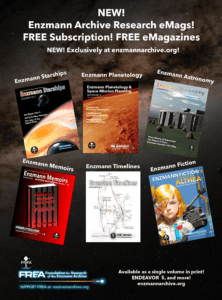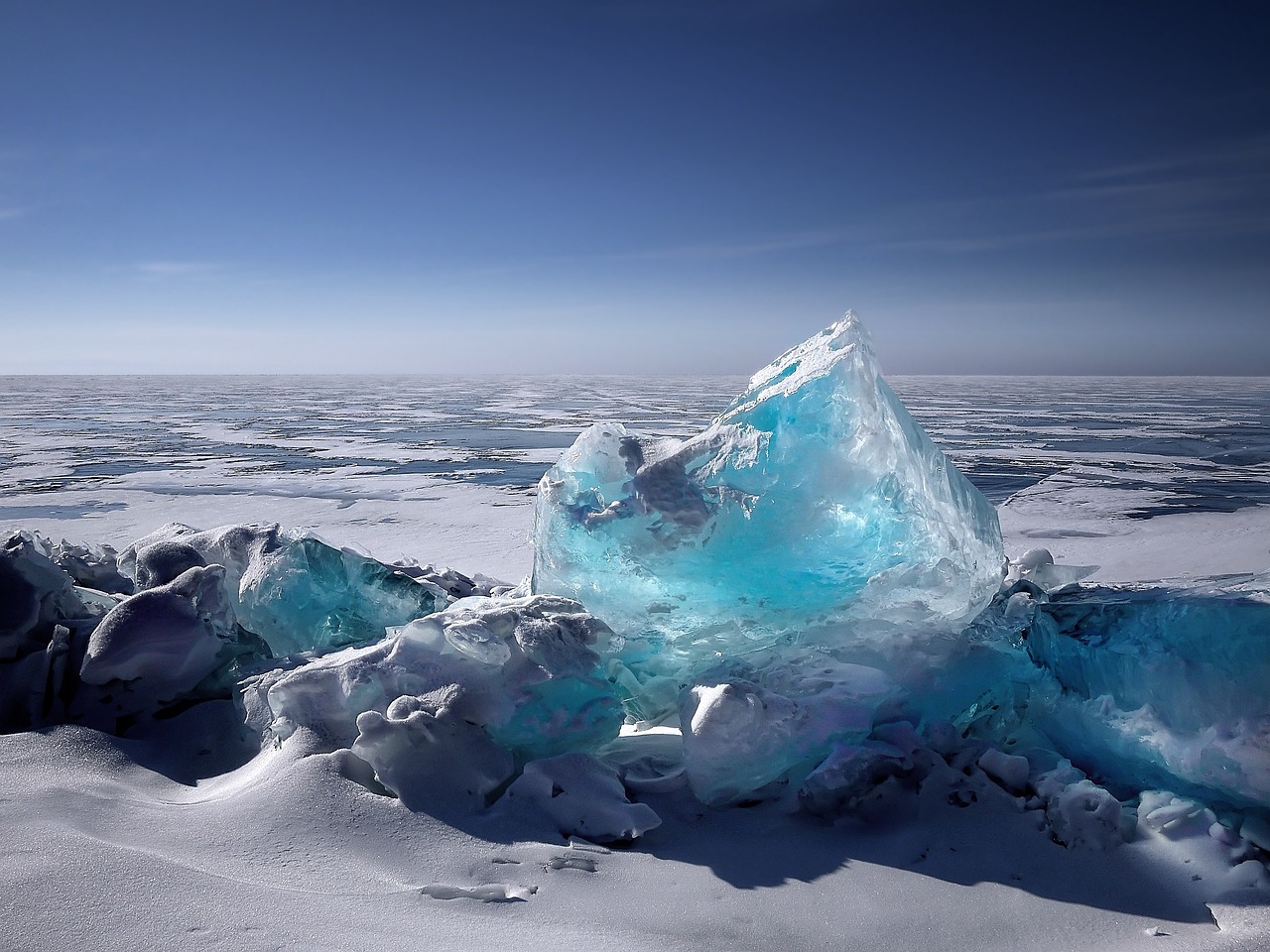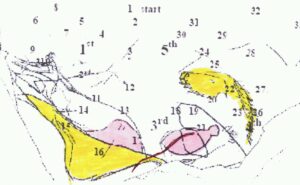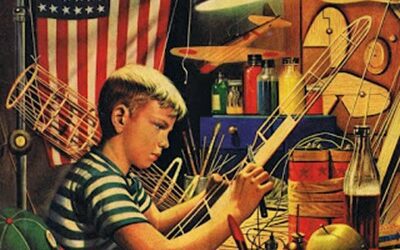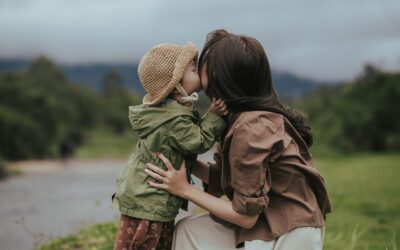The above inscription introduces us to the child we will call Lorelei. The shapes shown above are not unique to this tablet, which is a stone of only a few inches. For more detailed work by Dr. Enzmann, seeIce Age Language Translations, Vocabulary, Grammar.The number 16 shape is that of a female and is used thousands of times. Here she is gravid, as indicated by #1 pink shape.Then, the baby, #21 pink shape, is born and the umbilical cord still connects the mother and child as indicated by the red line.Also shown are the horse heads, #22 in yellow. This is to both thank the horses for their sacrifice and to instruct others how to use what parts of the horse for certain things, what kind of horse it is, and when/where to find it. There are two: stallion protects the mare.There are others included in this inscription – sisters, aunts, elder women, and males – all etched with lines. It takes a community to safely birth a child in the iron-cold of an ice age.The teenage boys and men take shifts of a few minutes outside tending the roaring fire, where a certain kind of rocks are heated and brought in to surround the mother and cradle. Any more than a few minutes and the men or boys would freeze to death, even next to the fire. The rocks must be the right kind, the wrong kind will explode.Aunts and sisters help the mother deliver the child and then mom and babe are nurtured with warm broth and quilted blankets.Here begins Lorelei’s fascinating saga. Here, a baby’s time-thread begins; the first plattes braiding together three lives. It is time’s thread from dawn to dusk, through nights, across years of lives. It’s continued in many more documents written on stone.Reflect on the environment: summers in this glacial climate are barely warm – rarely comfortable, with perhaps just three west-wind months annually. In all directions a cold prairie of long, many-colored grasses extends thousands of miles across the Amerasian super-continent of 12,500 BC.North and south, mile-thick continental glaciers glow purple. Dry, deep, sub-freezing easterly winds roar across Amerasia through the winters – even as the little girl is born. Seasonally, herds of tetra fauna by the millions thunder across the prairie in four groupings. Giant predators follow and scavengers lurk. This is Lorelei’s world. Loved, she survives. She is us, and we are her.
A little girl is born. Childcare is of enormous importance and extensively written about on inscriptions from 14,500 years ago. They tell us about a little Rhine Maiden. The story on many inscribed stones, or plattes, includes: her birth, making her crib, sanitary care, making her diapers, her quilt, a winter outing, and weaving at the loom by lamplight. Recognizable symbols and signs are many; still there’s so much of this that’s not yet readable.
Call this just-born little Rhine maiden Lorelei. We don’t really know what her name is; perhaps those hereafter will discover it in a deeper reading of this beautiful story written on stone. The calendric indicates it’s close to or at winter solstice.
Inside, the ladies have a cradle ready. It’s padded, soft, and warm inside, and made of strong horsehide outside.
Together, five ladies of the house greet the newborn: mother, three ladies, and a young teenage daughter. A spearmen works outside to keep away beasts, and he stoke fires, heats bed-warming stones, and waits for the really-welcome newcomer. The teenage boy scurries in and out of the winter house, bringing in warming stones that he heats outdoors, to make her mother comfortable. He fetches moss and dry grass and collects hair for felt padding as needed. Outside, on the icy long-grass prairie, a mother fox cries. Perhaps a fox paw is hung on the cradle.
Many things come from earlier horse hunts: hides of the horses for the outside of a cradle, hair from the horses with which to sew, make cord, and weave strong warps of our fabrics; wool with which to make felt to make the woven fabrics warmer; bones and teeth of which to make tools and things; hooves to shred for glue and waterproofing; horse meat to eat inside the house that has insulated horse-hide walls. The substance of horses you hunt nurtures your child. They are included on the inscription.
